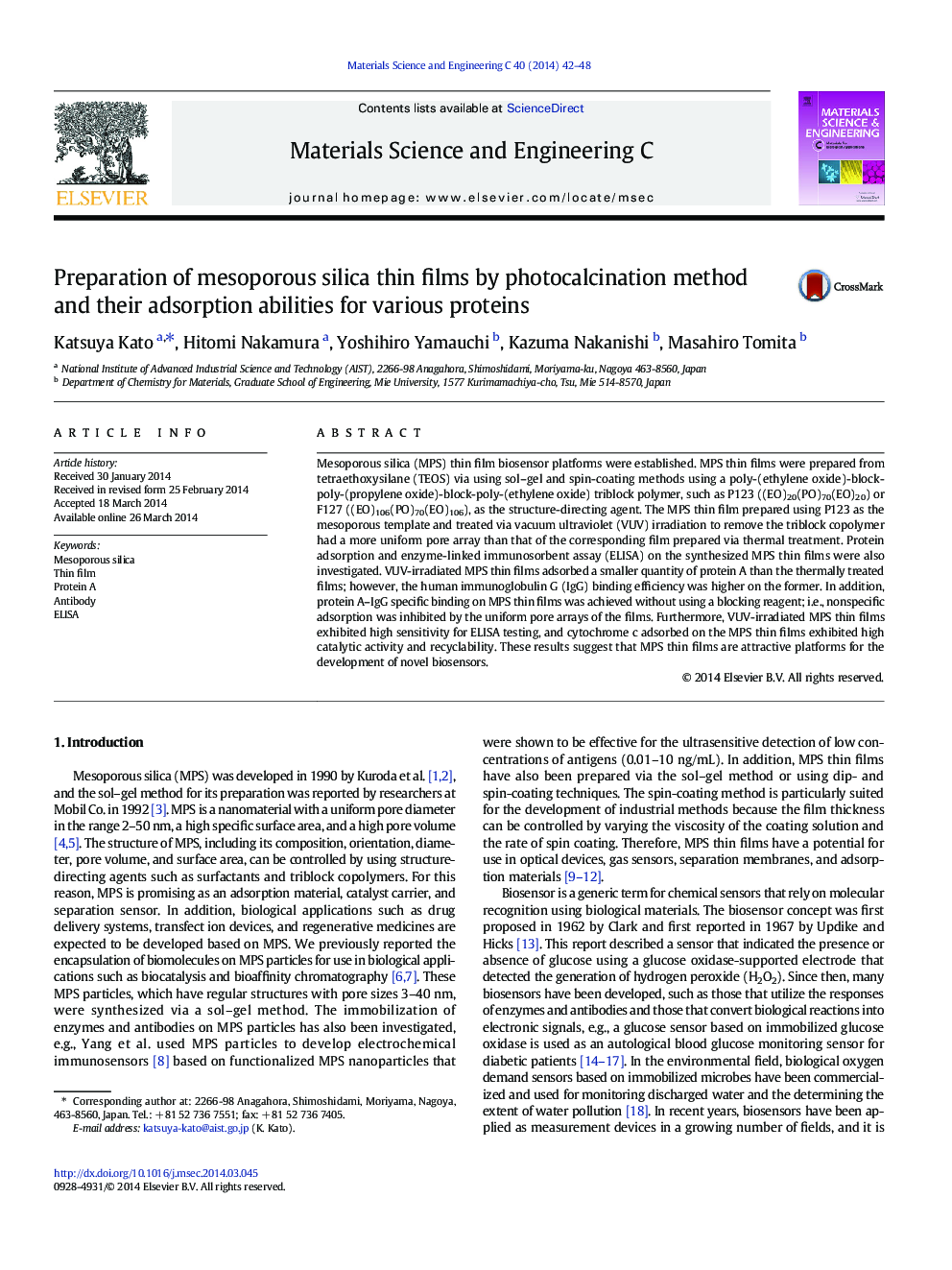| کد مقاله | کد نشریه | سال انتشار | مقاله انگلیسی | نسخه تمام متن |
|---|---|---|---|---|
| 1428313 | 1509181 | 2014 | 7 صفحه PDF | دانلود رایگان |
• VUV-treated MPS thin films with removed polymer had uniform pore.
• VUV-treated MPS thin films exhibited high sensitivity by ELISA.
• Cytochrome c showed the catalytic activity and recyclability on synthesized films.
Mesoporous silica (MPS) thin film biosensor platforms were established. MPS thin films were prepared from tetraethoxysilane (TEOS) via using sol–gel and spin-coating methods using a poly-(ethylene oxide)-block-poly-(propylene oxide)-block-poly-(ethylene oxide) triblock polymer, such as P123 ((EO)20(PO)70(EO)20) or F127 ((EO)106(PO)70(EO)106), as the structure-directing agent. The MPS thin film prepared using P123 as the mesoporous template and treated via vacuum ultraviolet (VUV) irradiation to remove the triblock copolymer had a more uniform pore array than that of the corresponding film prepared via thermal treatment. Protein adsorption and enzyme-linked immunosorbent assay (ELISA) on the synthesized MPS thin films were also investigated. VUV-irradiated MPS thin films adsorbed a smaller quantity of protein A than the thermally treated films; however, the human immunoglobulin G (IgG) binding efficiency was higher on the former. In addition, protein A–IgG specific binding on MPS thin films was achieved without using a blocking reagent; i.e., nonspecific adsorption was inhibited by the uniform pore arrays of the films. Furthermore, VUV-irradiated MPS thin films exhibited high sensitivity for ELISA testing, and cytochrome c adsorbed on the MPS thin films exhibited high catalytic activity and recyclability. These results suggest that MPS thin films are attractive platforms for the development of novel biosensors.
Figure optionsDownload as PowerPoint slide
Journal: Materials Science and Engineering: C - Volume 40, 1 July 2014, Pages 42–48
